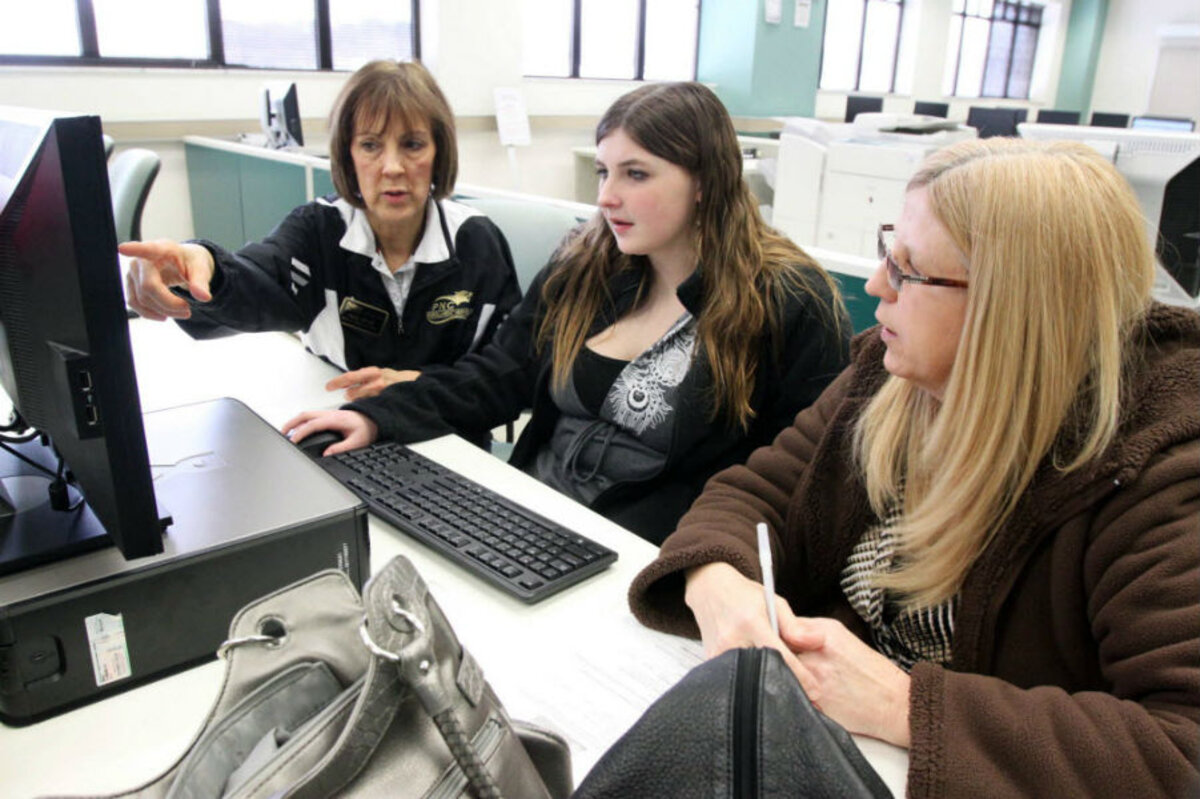Without FAFSA simplification tool, students find extra hurdles to funding college
Loading...
Across the country, high school seniors and returning college students sat down at their computers to begin the Free Application for Student Aid, also known as FAFSA, in the early months of 2017. They entered information about their own income, perhaps from part-time jobs rushed to between classes and hours spent studying at the library, and their parents’ finances. They answered questions about the tuition at their schools and totaled up their family’s assets – all part of the painstaking process of seeking financial help to cover their bills.
But those who reached the end of the application after March 3 received an error message as they tried to finalize the form: The IRS Data Retrieval Tool, which allows students to verify their and their parents' income, was down for maintenance, unable to link past tax return information to the federal aid application.
At first, many assumed the system was facing a temporary glitch. They closed their computers and planned to return in a day or two to finish the application process, waiting for officials with the IRS and Education Department to sort out the issue.
But the outage continued as days ticked down, and deadlines to file crept closer. The error took college aid experts and students by surprise, who worried that the tool, which has improved access to aid applicants, would become a thing of the past.
“We were shocked and it was very sudden.” Carrie Warick director of policy and advocacy for the National College Access Network, tells ���Ǵ���. The data tool “was certainly a step forward for FAFSA simplification, it eases some of the most difficult questions for students.”
The IRS later explained that the tool had been suspended as authorities launched investigation into potential hacking and fraud. More, the IRS said the tool would continue to be unavailable “for several weeks.”
"Initially, we were very surprised because we didn't know why this had happened," Ms. Warick says. Many began to speculate reasons for the tool's disappearance, and some wondered if it was an attempt to curtail aid.
The IRS and FAFSA have since explained the confusion, but it seems that there are few options to easing the burdensome application process for students seeking to meet tight deadlines.
“We have heard from students, parents, and the financial aid community that applying for aid is ,” James Runcie, Federal Student Aid chief operating officer, said in a statement Thursday. “We will do all we can to help students and families successfully submit applications while the tool is unavailable and remain committed to protecting applicants’ personal information.”
That change to the process comes as the peak time to file applications rolls in. Various deadlines are approaching based on school and state mandates, and if students are unable to file their forms before those dates, they could risk losing aid.
Since 2010, students have been able use the tool to retrieve information, providing just a name, date of birth, address, and Social Security number for themselves and their parents. This has not only simplified some of the form’s more complicated questions, but also allowed those who don’t have access to physical tax return forms to call up old data with ease.
But this year, students will have to manually enter tax return information from past years’ forms they kept on file. The problem, many say, is that not everyone keeps physical copies of their tax returns, and they will have to reach out to the IRS to request them. That process can prove not only tedious and time consuming, but nearly impossible for students whose parents aren’t playing an active role in helping them through the process.
“This does not limit families’ ability to apply for aid,” an earlier statement from the IRS and Department of Education announcing the interruption said.
But others beg to differ. While it’s still possible to take other avenues when applying for aid, many of the students seeking tuition help are already at a disadvantage.
Prior to the linking of the systems, many students did not finish the form because it required them to manually input tax data from their parents’ previous year returns – information they either did not have, or proved too confusing to complete. By amending the system to allow students to use returns from two years prior, which are already finalized instead of waiting for the April 15 deadline, FAFSA increased access to aid for students.
That change brought an increase in completed application, allowing students to link data without contacting the IRS and sifting through old records to access the information.
“I think it definitely limits students that have very high barriers or that are first-generation” college students, says Amanda Justen, the career readiness coordinator at Roosevelt High School in Minneapolis who works with Achieve Minneapolis, a nonprofit that focuses on career readiness for students, in an interview with the Monitor.
The most talked about barrier to an education is generally the rising price tag on tuition, and concerns of mounting student debt among Millennials in the tens of thousands has spurred talk of free or deeply discounted state tuition.
But for first-generation college students, who are often from low-income and minority families, there are additional barriers, Ms. Justen says. Introducing high school students to the idea of pursuing a college education and motivating them to follow through with various aspects of the process can be a daunting task that pushes them outside of their comfort zones.
Earlier this year, she took one of her students to tour a local college. Immediately, the student fell in love with the campus and wanted to apply.
“She started following through on everything,” Justen says. “In the past, she’s been hesitant. In that moment, she was super hooked in, and we started her FAFSA.”
Justen, who has helped various students get through the process who might not have the expertise and ready support from parents. But with the Data Retrieval Tool unavailable, the girl would need copies of her mother’s tax return to proceed.
And those, she said, were not readily available.
Her mother had filed using an online service, which doesn’t generate a physical copy of the return. And while she’s trying to work with her mother to track down a return, Justen says it’s not clear if the girl will be able to make the deadline.
Now, she says, that motivated student’s drive has stalled, as she isn’t sure she’ll be able to retrieve her mother’s information.
“Any student whose family is just in challenging circumstances and maybe hasn’t kept their tax return records, the FAFSA system makes them use their parents information no matter what,” Justen says. “Now with this tool being down, those students have to figure it out. It kind of assumes that the parents are going to have both the time and ability and knowledge of how to do these things, but the reality is it’s just another additional barrier.”
There are others like her. From students whose parents do not speak English as a primary language or have poor relationships, retrieving information from the IRS can be an increasingly difficult task. And there’s no substitute around it – even students who receive no financial contributions from their parents must input their income, unless they are homeless or qualify as emancipated any guardians.
“FAFSA is such a critical gateway for students and families being able to access higher education,” Lindsay Page, a professor at the University of Pittsburgh’s Graduate School of Education, says. “It’s already recognized as this tremendously burdensome process, so to rollback some of the strides that have been made is very discouraging.”
Some schools and states have addressed this by extending deadlines. While that’s a “Band-Aid” fix, Page says, schools and the IRS also need to communicate openly with students about the change so they can prepare by requesting information from the IRS as soon as possible.
Still, others note that extending time may not be enough to help all students, and they worry that the additional barriers could become a permanent fixture in the process.
“First, we’re very concerned that any of students don’t become a victim of [fraud],” Warick says. “Second, we also do not want this to be the reason the tool is taken down permanently.”
Her advice for students: Start as soon as possible to get around the extra hurdles.
“We are encouraging students to start filling out the FAFSA as soon as possible. But we want to be clear that the FAFSA is still available and families shouldn’t wait for the Data Retrieval Tool to come back,” she says. “They just need to grin and bear it and get through it.”





